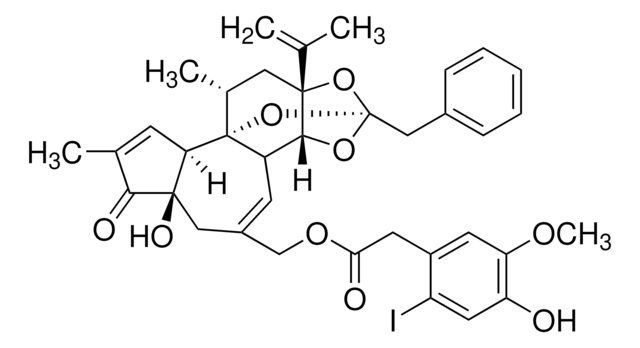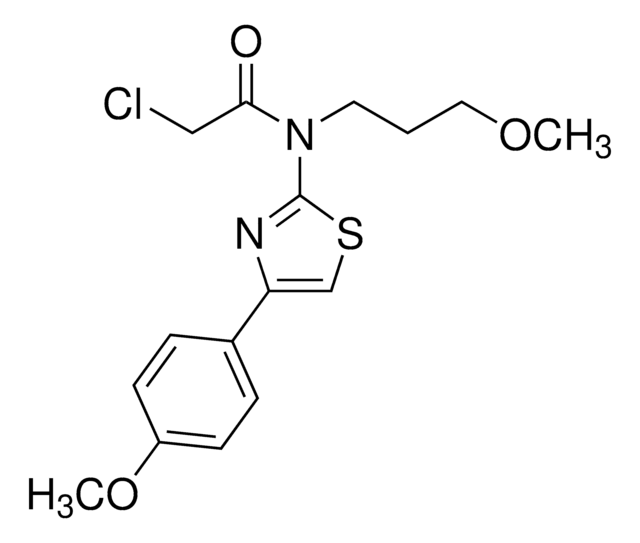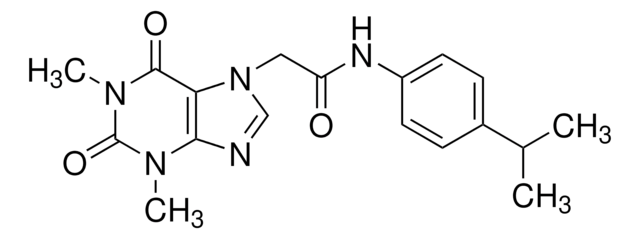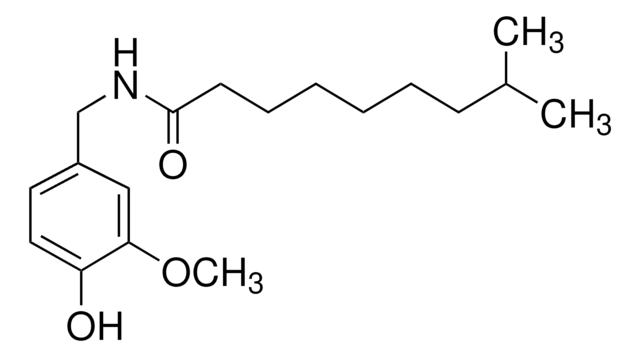R8756
Resiniferatoxin
from Euphorbia poisonii, ~95%
About This Item
Productos recomendados
biological source
Euphorbia poisonii
Quality Level
assay
~95%
storage temp.
−20°C
SMILES string
[H][C@@]12C=C(C)C(=O)[C@@]1(O)CC(COC(=O)Cc3cc(O)cc(OC)c3)=CC4[C@H]5O[C@]7(Cc6ccccc6)O[C@]5(C[C@@H](C)[C@]24O7)C(C)=C
InChI
1S/C37H40O9/c1-21(2)35-17-23(4)37-29(33(35)44-36(45-35,46-37)19-24-9-7-6-8-10-24)14-26(18-34(41)30(37)11-22(3)32(34)40)20-43-31(39)15-25-12-27(38)16-28(13-25)42-5/h6-14,16,23,29-30,33,38,41H,1,15,17-20H2,2-5H3/t23-,29?,30-,33-,34-,35-,36-,37-/m1/s1
InChI key
IKYCZSUNGFRBJS-PMIKMUNESA-N
Gene Information
rat ... Trpv1(83810)
Application
- for complex preparation for cryo-electron microscopy structural studies
- to test its effect towards immune responses to P. aeruginosa in sensory neurons associated with the cornea
- to study its effects in the denervation of the peripheral sensory nerves in psoriatic mice
Biochem/physiol Actions
signalword
Danger
hcodes
Hazard Classifications
Acute Tox. 3 Oral - Skin Corr. 1A
Storage Class
6.1C - Combustible acute toxic Cat.3 / toxic compounds or compounds which causing chronic effects
wgk_germany
WGK 3
flash_point_f
Not applicable
flash_point_c
Not applicable
ppe
Eyeshields, Faceshields, Gloves, type P3 (EN 143) respirator cartridges
Elija entre una de las versiones más recientes:
¿Ya tiene este producto?
Encuentre la documentación para los productos que ha comprado recientemente en la Biblioteca de documentos.
Nuestro equipo de científicos tiene experiencia en todas las áreas de investigación: Ciencias de la vida, Ciencia de los materiales, Síntesis química, Cromatografía, Analítica y muchas otras.
Póngase en contacto con el Servicio técnico








